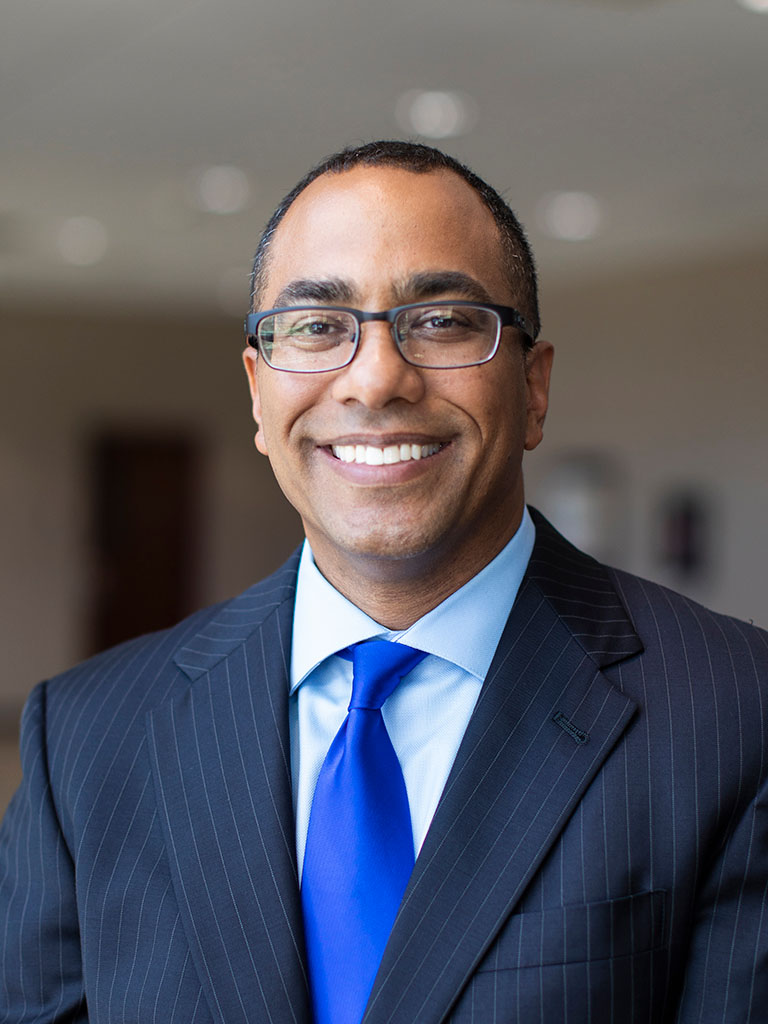 On University of St. Thomas Week: College athletes getting paid to play is inevitable, so how should it work?
On University of St. Thomas Week: College athletes getting paid to play is inevitable, so how should it work?
David Grenardo, professor of law, looks into the options.
David A. Grenardo is the Associate Director of the Holloran Center for Ethical Leadership in the Professions and Professor of Law at the University of St. Thomas School of Law (Minneapolis). He teaches Contracts, Sports Law, Moral Reasoning for Lawyers, Serving Clients Well, and Business Basics. He has previously taught Professional Responsibility, Business Associations, Civil Procedure, and International Sports Law.
He has presented on professionalism and ethics multiple times locally, statewide and nationally. He practiced corporate civil litigation in California and Texas for three large law firms – Jones Day, DLA Piper, and King & Spalding – for nearly a decade before joining the legal academy in 2011.
His scholarship focuses on professional responsibility, sports law, legal pedagogy, and the practice of law. He has published or forthcoming articles in the Harvard Journal of Sports & Entertainment Law, the Georgetown Journal of Legal Ethics, Pepperdine Law Review, Brooklyn Law Review, Oregon Law Review, and the Berkeley Journal of Entertainment & Sports Law, among others.
Grenardo has been quoted in multiple articles on sports law, including by the New York Times, ESPN, and the Boston Globe. His op-eds on sports (as they relate to business and society) have appeared in, among other publications, Fortune Magazine (solicited), AP News, Yahoo! Finance, and the Houston Chronicle.
He earned his B.A. from Rice University where he played football and was a four-year letterwinner. He earned his J.D. from Duke University School of Law.
Compensating College Athletes for Playing
College athletics is now an $18 billion-a-year industry, and pay-for-play, in which a university pays athletes directly for playing a sport, is inevitable.
The NCAA has previously argued in court, successfully for years, that college sports is a different and preferable brand of sports for consumers because the athletes are not getting paid – this is the NCAA’s amateurism argument; if the athletes receive compensation, the argument goes, less people – consumers – would watch college sports. The consumers’ reaction, however, to college athletes getting paid for their names, images, and likenesses, which became possible just two years ago, and getting paid thousands, hundreds of thousands, or even millions of dollars, has not been to watch less – consumption of college sports is still high; in fact, the result has been for alumni, boosters, and donors, to create collectives to help athletes get paid or to pay them directly.
The Supreme Court of the United States showed an unwillingness in the 2021 Alston case to defer to the NCAA in ruling on a narrow issue – whether athletes could receive education-related benefits.
One option for the inevitable pay-for-play is the Duke Model, which is a completely performance based model. The more an athlete plays and produces on the court or field, the more they would earn. The Duke Model provides great flexibility in which conferences and schools could add or delete categories of compensation and adjust the compensation levels based on available funds.
A second potential model is the free market model in which athletes would get paid based on what the market determines they are worth, just like how everyone else in college sports is paid now, such as coaches, athletic directors, and NCAA executives. This is also how most people in our country are paid – under a free market model.
Regardless of whether conferences, the NCAA, or Congress adopt the Duke Model or the Free Market Model, they should choose some method expeditiously because pay-for-play is coming soon.
Read More:
[SSRN] – Author Page for David Grenardo

